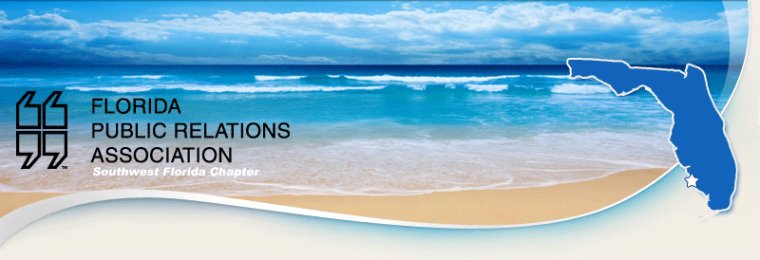By Heidi Taulman, APR
President, Southwest Florida Chapter of the Florida Public Relations Association
Publicists. Event Planners. Spin Doctors.
President, Southwest Florida Chapter of the Florida Public Relations Association
Publicists. Event Planners. Spin Doctors.
For years, those were the perceptions of the public relations practitioner. In the early days of the 20th century, there was some truth to them. Lack of training and ethical standards on the part of some practitioners perpetuated the negative perception of individuals who claimed to be public relations “professionals.”
In today’s world, the emergence of Accreditation has helped to bring stronger credibility to the public relations profession, especially by practitioners who have chosen to complete the strenuous process that leads to it. Being able to use the initials APR (Accredited in Public Relations) is a mark of distinction for public relations practitioners who commit to the profession through ethical practices and sound judgment, strategic perspectives, knowledge of best practices and the use of the research-planning-implementation-evaluation process.
Accreditation supports the maturation of the field of public relations, helping it move toward becoming a true profession similar to others that require certification or credentialing. Ethics are and have been a central part of the Accreditation process. Once professionals are Accredited in Public Relations, they are required to follow a strict code of ethical standards.
Hiring managers and clients who choose Accredited public relations professionals know that they have chosen strategic thinkers who have demonstrated skills and abilities necessary to advise executives or managers on how best to establish and maintain the relationships necessary to meet organizational objectives. These professionals have completed the Accreditation process and are committed to maintaining that Accreditation through professional and personal development. That sets Accredited professionals apart from other practitioners.
Today, eight professional organizations compose the Universal Accreditation Board (UAB) and participate in the Accreditation process, including the Florida Public Relations Association (FPRA). In Southwest Florida, 27 members of the Southwest Florida Chapter of FPRA proudly display the APR initials after their names.
The Southwest Florida Chapter of FPRA places a major emphasis on professional development to its membership with its 24-member volunteer Board of Directors and leadership team. The chapter does this by sharing education each month, hosting an annual, one-day seminar, PRU, focused on public relations with speakers from around the state, participating in state association activities including an annual three-day conference, annual 10-week study sessions to prepare for Accreditation and many other activities such as events and tours with the local media, pro-bono activities with area nonprofits and more.
Providing credentials is as important now as it ever has been in the past. FPRA has provided me the great opportunity to join in its efforts to advance our profession. This year marks the 50th anniversary of APR. It is a process that continues to evolve, but it is a process that has brought credibility to an important profession that has wide-ranging impact. Remember that the next time you need a public relations professional.



